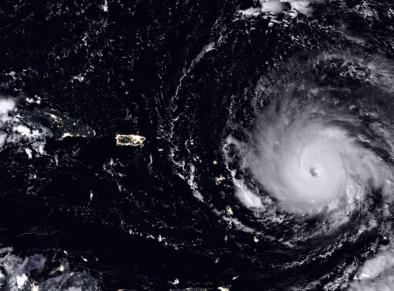Science Source
Persistent northward North Atlantic tropical cyclone track migration over the past five centuries
- States that accurately predicting future tropical cyclone risk requires understanding the fundamental controls on tropical cyclone dynamics
- Presents an annually-resolved 450-year reconstruction of western Caribbean tropical cyclone activity developed using a new coupled carbon and oxygen isotope ratio technique in an exceptionally well-dated stalagmite from Belize
- States that western Caribbean tropical cyclone activity peaked at 1650 A.D., coincident with maximum Little Ice Age cooling, and decreased gradually until the end of the record in 1983
- Considered with other reconstructions, the new record suggests that the mean track of Cape Verde tropical cyclones shifted gradually north-eastward from the western Caribbean toward the North American east coast over the last 450 years
- Finds that, since ~1870 A.D., these shifts were largely driven by anthropogenic greenhouse gas and sulphate aerosol emissions
- The results strongly suggest that future emission scenarios will result in more frequent tropical cyclone impacts on the financial and population centres of the northeastern United States
Related Content
Science Source
| Geophysical Research Letters
Increasing Magnitude of Hurricane Rapid Intensification in the Central and Eastern Tropical Atlantic
Karthik Balaguru, Gregory R. Foltz, L. Ruby Leung
Headline

Apr 19, 2018 | Miami Herald
NASA team finds massive Everglades mangrove damage from Irma. Can it recover?
Headline

Mar 22, 2018 | Reuters
Last three years hottest on record, severe weather hits 2018: U.N.
Headline

Jan 23, 2018 | Nature
Atlantic hurricanes' rapid growth spurts are intensifying


